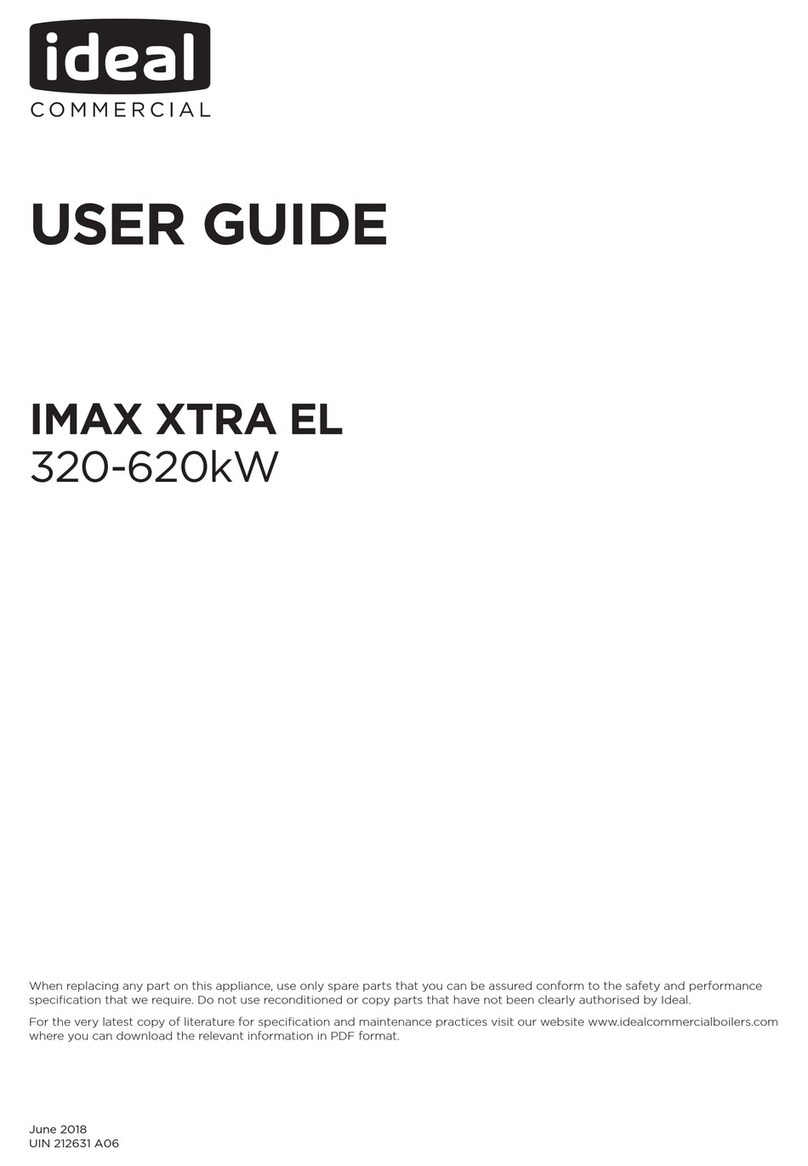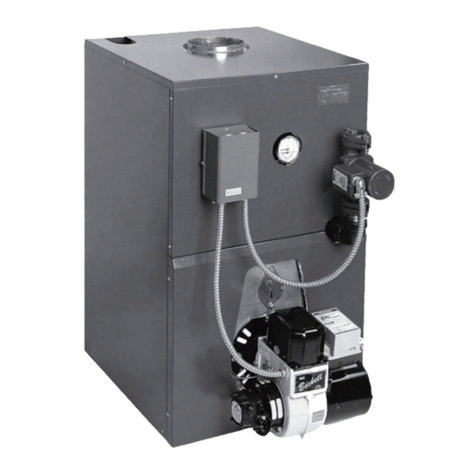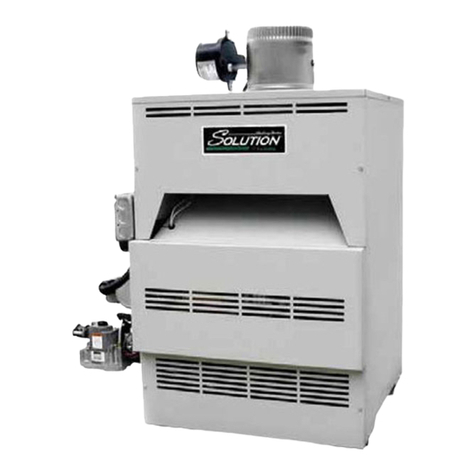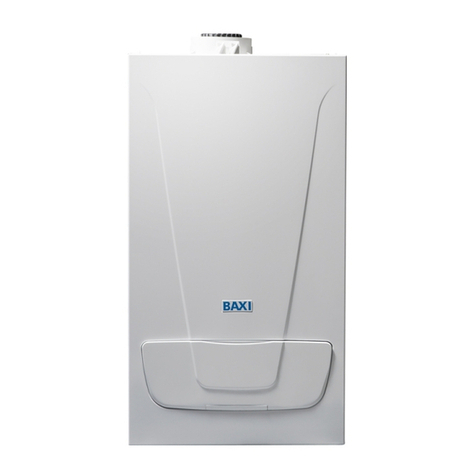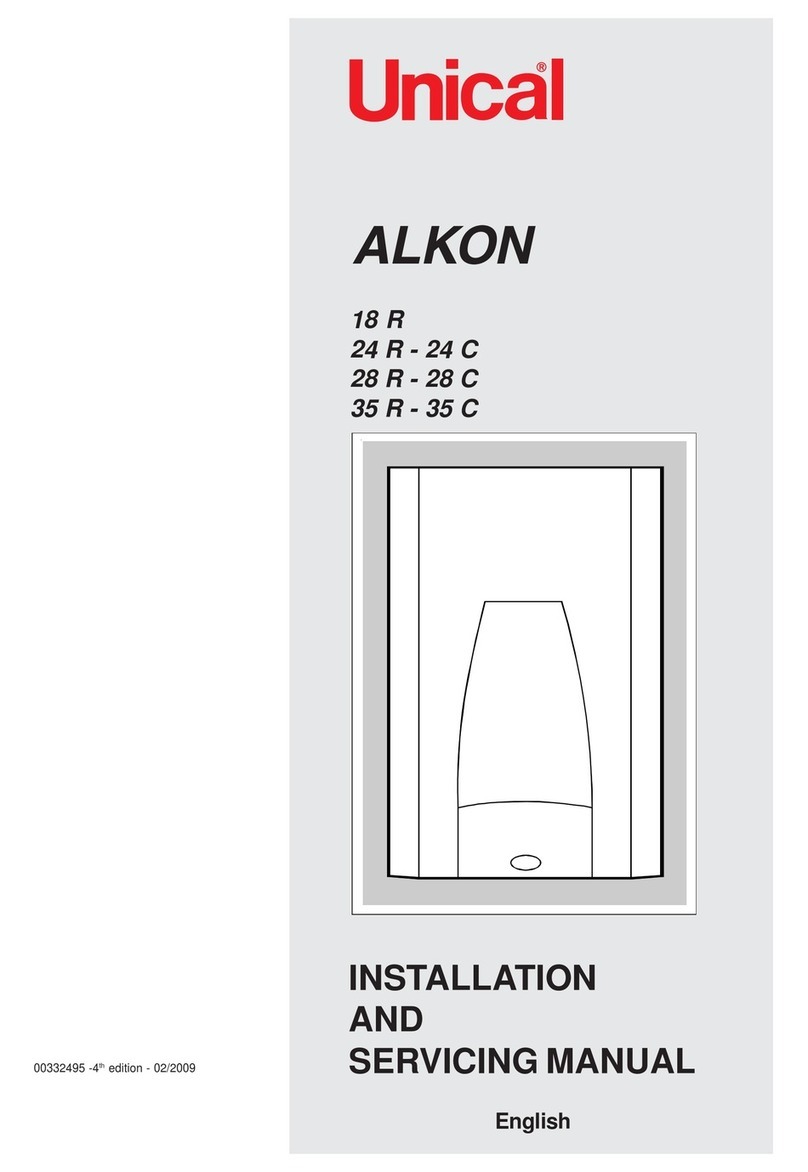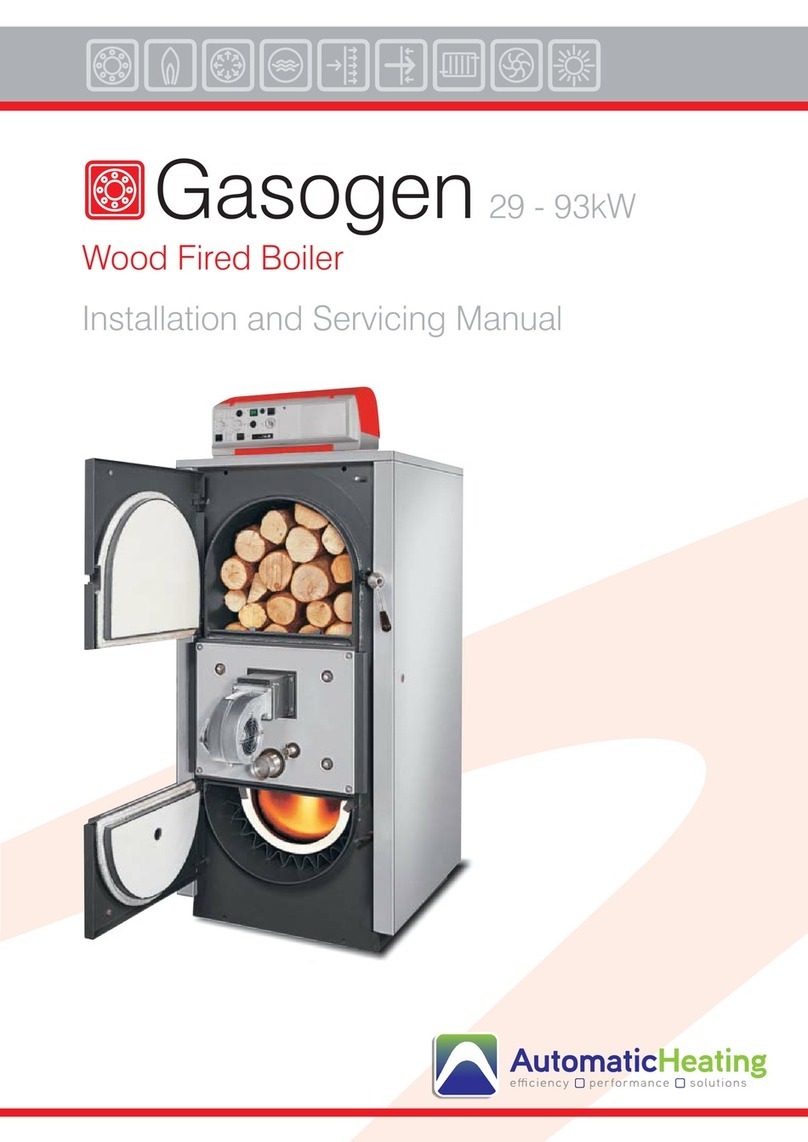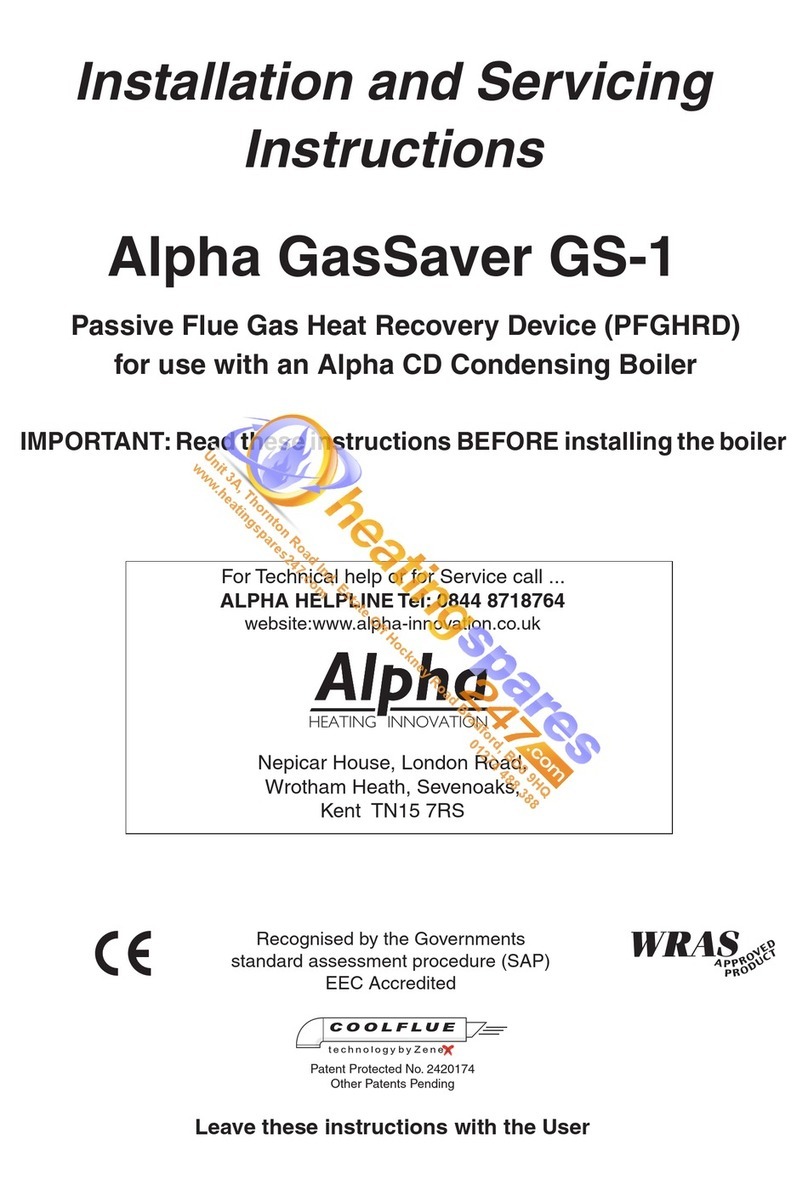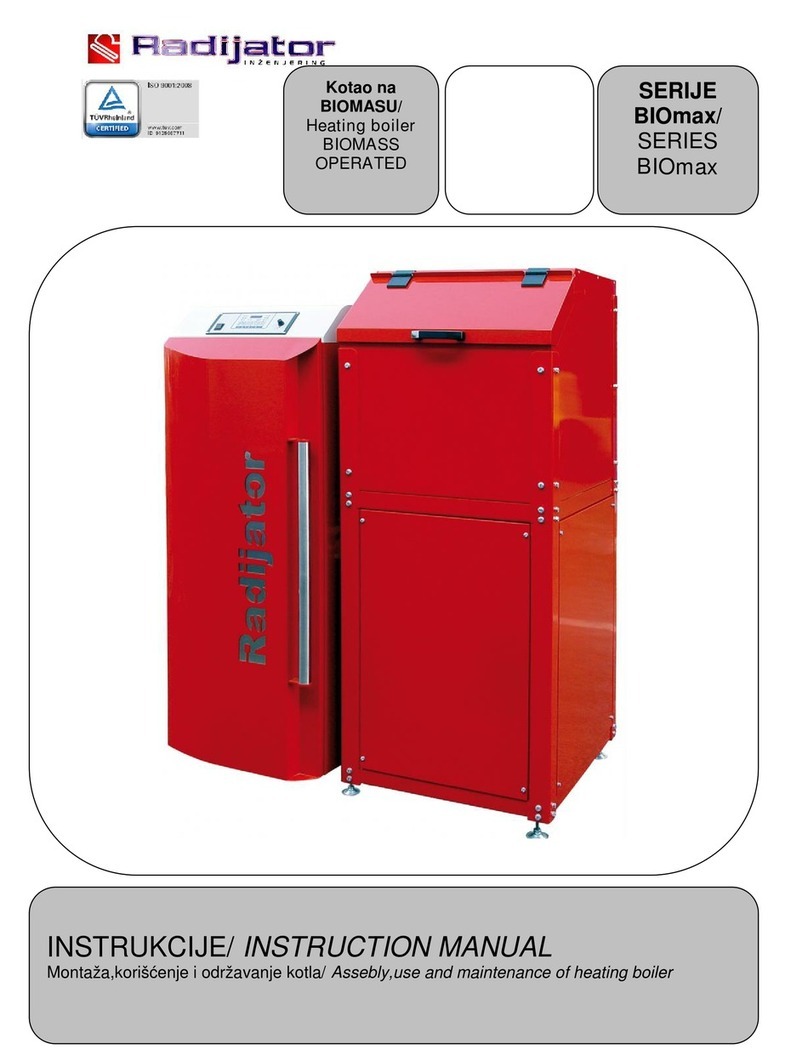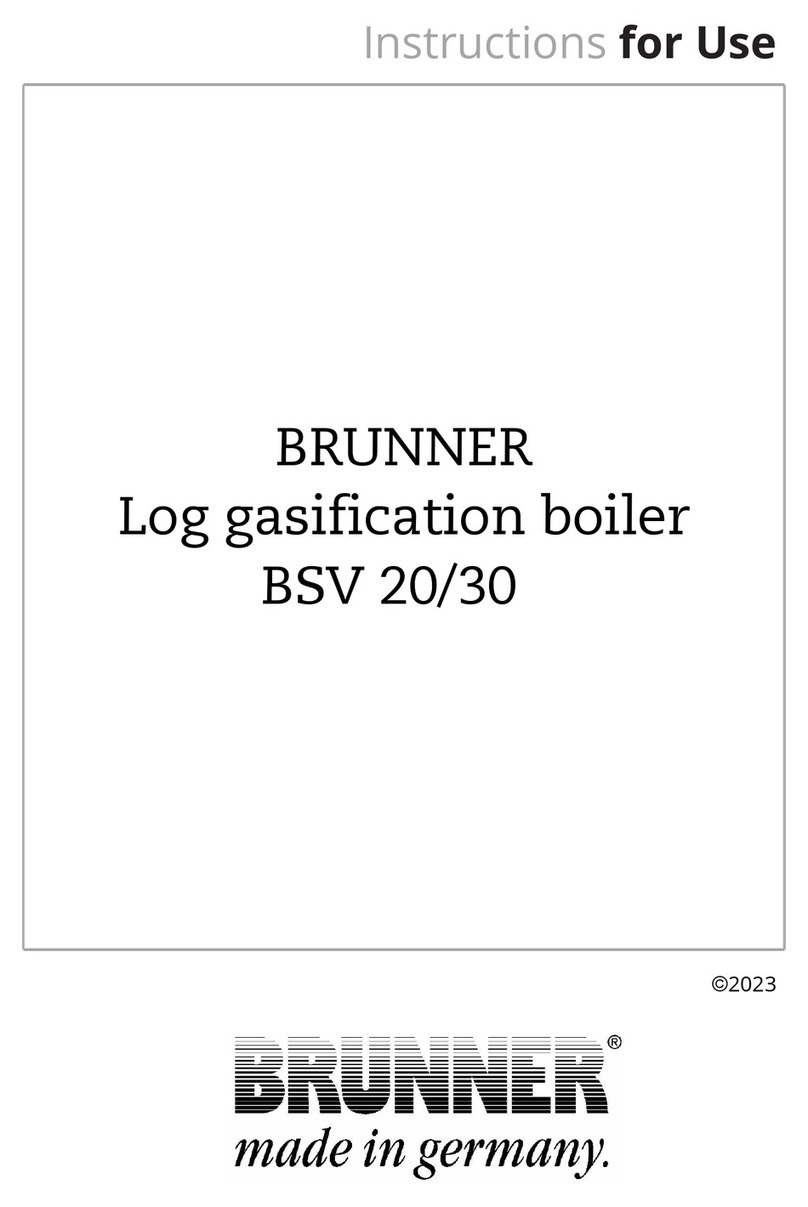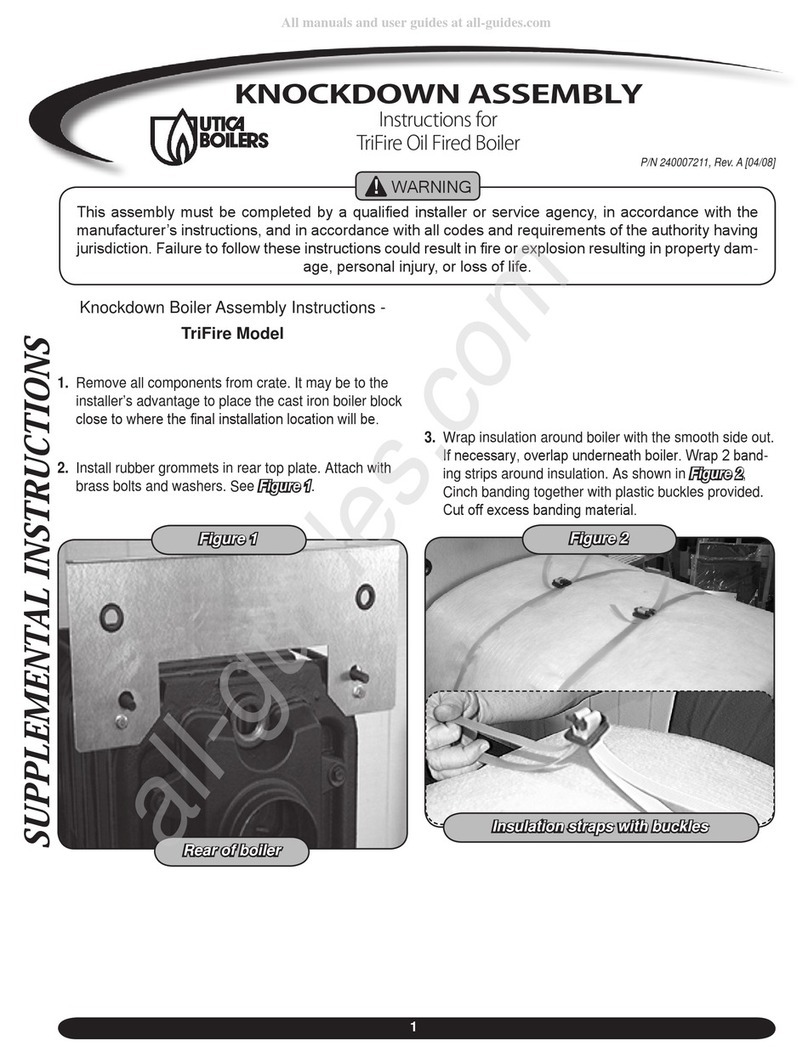
09/2017
- 5 -
Copyright © 2017, Fast ČR, a.s.
EN Preserving Boiler
User'smanual
■
Prior to using this appliance, please read the user’smanual thoroughly, even in cases,
when one has already familiarised themselves with previous use of similar types of
appliances. Only use the appliance in the manner described in this user’smanual.
Keep this user’smanual in asafe place where it can be easily retrieved for future use.
■ We recommend saving the original cardboard box, packaging material, purchase
receipt and responsibility statement of the vendor or warranty card for at least
the duration of the legal liability for unsatisfactory performance or quality. In the
event of transportation, we recommend that you pack the appliance in the original
box from the manufacturer.
DESCRIPTION OF THE APPLIANCE
A1 Removable lid
A2 Thermally insulated handles
A3 Boiler, 27-litre capacity
Capacity for up to fourteen 1-litre
canning jars.
A4 Tap
A5 Base unit
fitted with apower cord.
A6 Temperatre control knob
enables variable temperature
setting in the range from 30 to
100 °C (±5 °C).
A7 Indicator light
signals that the set temperature is
being maintained.
A8 Switch for activating and
deactivating the sound signal
A9 Timer
enables the setting of the
automatic shut off time in the
range from 20 to 120 minutes or
to set continuous operation.
A10 Canning rack, ∅31 cm
PURPOSE OF USE
■ The preserving boiler is used for canning fruit, vegetables, etc., or also for making
and bottling hot beverages such as mulled wine, punch, tea, etc., for heating soups
and sauces and for blanching fruit, vegetables, etc.
BEFORE FIRST USE
■ Remove all packaging materials, including promotional tags and labels from the
appliance and its accessories.
■
Wipe the inner surface of the boiler A3 with adampened cloth. Fill it with
approximately 5 litres of clean water and allow the water to boil in it for
approximately 10 minutes. Then allow the appliance to cool down. Then place
acontainer underneath the tap A4 and drain the water into it. Detailed operating
instructions for the appliance are provided in the following chapter.
Note:
When first turned on, aslight odour may be noticed. This is an entirely
normal event, which will disappear in ashort time.
■ Now the appliance is ready for operation.
OPERATING THE APPLIANCE
■ Place the appliance on ahorizontal, dry and stable surface and fully unwind the
power cord.
■
Fill the boiler A3 with the required amount of water or other liquid, i.e. at least
5 litres but no more than 5 cm below the top edge of the boiler A3.
■ If you wish to use the appliance for canning, first place the canning rack A10 on
the bottom of the boiler A3. Place the canning jars on to the canning rack A10 and
then fill up with the required amount of water. Never place canning jars directly on
the bottom of the preserving boiler A3. Canning jars may come in various heights
and shapes, and should be submerged in water up to ⅔to ¾of their height. In the
event that you stack them on top of each other in two or more levels, the canning
jars in the top row should be submerged up to ¾ of their height, see figure B.
■ Close the boiler A3 with alid A1 and plug the power cord into apower socket. Set
switch A8 to position and select the desired canning temperature using the
temperature control knob A6. Set the timer A9 to position“On/Cont.”(continuous
operation). The heating up process is now started. The indicator light A7 will turn
on. This signals that the appliance is heating up to the desired temperature. When
the set temperature is reached, an acoustic signal will be made and the indicator
light A7 will turn off.
■
When the appliance is heated to the desired temperature, set the switch A8 to the
position marked by symbol and use the timer A9 to set the desired canning
time. The indicator light A7 will turn on and off during operation. This signals that
the set temperature is being maintained.
■
After setting the timer A9, do not change the temperature control knob A6 setting.
Otherwise, acountdown error may occur and the timer A9 will need to be set again.
At the end of the set time asound is made and the appliance turns off automatically.
■
When you have finished canning, allow the contents in the boiler A3 to cool down
for awhile. Drain the water through the tap A4, however not completely. Keep the
bottom of the boiler A3 covered with water until it cools down completely. Water
can be drained from the boiler A3 in two ways, either by pushing the tap lever A4
down or by lifting the lever up.When lifted up, the lever locks in place and does not
need to be held.Water will continue to drain as long as you keep the lever pushed
down or as long as it remains locked in the lifted position. For draining greater
amounts of water, the second method is recommended, i.e. lifting the lever up.
After draining the water, carefully take out the canning jars using canning tongs
or kitchen gloves. Allow the jars to cool down naturally turned upside down on
awiping cloth. Submerge tin cans into cold water.
■ The appliance can likewise be used for heating soups, sauces and other viscous
liquids, for making mulled wine, punch, hot tea, etc. In such acase, make sure that
the canning rack A10 is removed from the boiler A3.
■
To heat up liquids to the desired temperature, set switch A8 to position and
use the temperature control knob A6 to set the temperature. Set the timer A9 to
position“On/Cont.”(continuous operation). When the set temperature is reached, an
acoustic signal will be made and the indicator light A7 will turn off. Set the switch
A8 to the position marked by the symbol. Use the timer A9 to set the time for
which you wish to heat the liquids or keep them warm at the set temperature. If
you need to adjust the temperature setting during operation, also set the timer
A9 again. An example of this may be, when you wish to boil liquids for acertain
time and then to keep them warm. Set the time A9 to the position“On/Cont.”, the
appliance will continuously heat the liquids and it will not turn off automatically.
■
Viscose liquids need to be stirred constantly during the heating up phase to prevent
them from burning. Regular stirring is also required when they are being kept warm.
■
The tap A4 is suitable for draining liquids with alow viscosity, such as mulled wine,
punch, hot tea, etc. Do not use it to drain soups, sauces, etc. To take out sauces,
soups, etc. from the preserving boiler A3, it is appropriate to use aladle.
■ After you have finished using the appliance, set the temperature control knob A6
and timer A9 to the OFF position and disconnect the appliance from the power
socket. Allow the appliance to cool down before handling it again in any way.
ADVICE AND TIPS FOR CANNING
■
For canning, only use good quality, fresh and ripe ingredients.Thoroughly wash the
ingredients in lukewarm water and allow them to dry naturally before canning them.
■ Canning containers (jars, tin cans, etc.) must be sterilised before being filled. This
applies also to their lids. Do not touch sterilised containers or their lids from the
inside. Do not use damaged containers or lids.
■ Fill jars to no more than 2 cm below the top edge. When canning blended foods,
pulps, ketchups, etc., fill the canning jars to no more than 3 to 4 cm below the
top edge.
■
When canning meat or smoked goods (frankfurters, etc.), fill the containers only to
¾ of their capacity. Remove any bones from meat before canning it. Put it in jars
while it is still warm and, if necessary, pour some gravy, etc. over it. Leave the canned
meat to stand until the next day and then can it again for 1 hour.
■
Do not can foods containing cream or flour.These ingredients are only added when
the food is later heated for consumption.
■ Always firmly close the canning jars after filling them.
■ The canning time starts only after the target temperature has been reached.
■ An economical canning method is steam sterilisation. The boiler A3 is filled with
water only to approximately 15 cm in depth and the jars are placed on the canning
rack A10. In the event that the water partially evaporates, top it up and at the
same time extend the canning time by the time required to again reach the
desired temperature.
■
It is appropriate to mark the contents and canning date on the jars and cans. Ideally,
store canned goods in acold, dark place.
■
Canned goods have avery long shelf life, however not unlimited. Therefore, check
them and consume regularly. In the event that an opened jar exhibits any signs of
spoilage (odour, film on the surface, etc.), never consume its contents.
■
This user’smanual includes basic canning advice and tips, and not precise
procedures.You will find recipes for preparing brines and exact canning procedures
in educational literature.
QUICK GUIDE TO CANNING
INGREDIENTS SETTING THE
TEMPERATURE
RECOMMENDED
CANNING TIME
Fruit
Apricots 90 °C 30 min
Peaches 90 °C 30 min
Pears (soft) 90 °C 30 min
Pears (hard) 90 °C 50 min
Strawberries 80 °C 25 min
Bilberries 85 °C 30 min
Raspberry 80 °C 25 min
Vegetables
Cauliflower 100 °C 90 min
White or red cabbage 90 °C 120 min
Peas 100 °C 130 min
Pickling cucumbers 90 °C 30 min
Asparagus 100 °C 100 min
